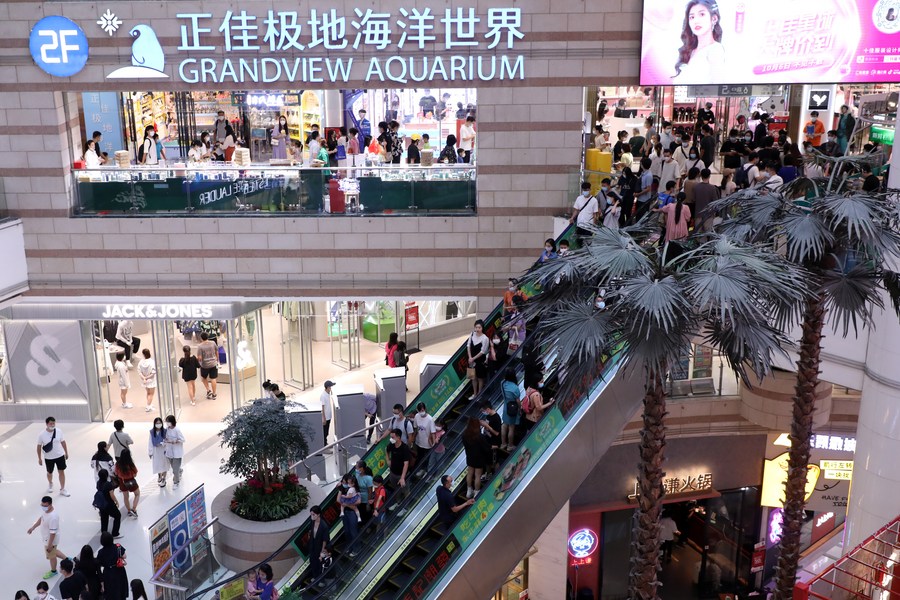Demand for high-end imports drives consumption upgrade, biz growth
 0 Comment(s)
0 Comment(s) Print
Print E-mail China Daily, November 4, 2022
E-mail China Daily, November 4, 2022

Chinese consumers are showing increasing demand for diversified and high-end consumer goods, with their spending on imported products being a significant driver for consumption upgrade, said a report from the Consumption and Industry Development Research Institute of Chinese e-commerce platform JD.
The report said smartphones, computers, maternal and infant products, beauty and skincare goods, and home appliances are the most favored categories by Chinese consumers among all imported products in the first three quarters.
Last year, a rising number of consumers preferred to buy foreign-branded smartphones, cosmetics, furniture, foods and beverages on JD's online marketplaces, while they were inclined to purchase homegrown brands when coming to nutrition and healthcare products, jewelry, outdoor sporting equipment, toys and musical instruments, it said.
JD has procured more than 500 billion yuan ($68.4 billion) worth of imported products over the past three years, the company said.
Imported products have gained traction among consumers during this year's Singles Day shopping carnival. In the first 10 minutes of the dayslong promotional campaign which kicked off at 8 pm on Monday, turnover of products in JD's virtual national pavilion covering overseas brands from more than 90 countries increased over 12 times compared with that of last year.
Younger shoppers aged between 26 and 35 are the major consumers of imported products, accounting for nearly half among all age groups, the report said. In addition, consumers aged between 46 and 55 contributed the fastest growth in purchasing imported products.
Liu Hui, director of JD's Consumption and Industry Development Research Institute, said overseas brands should pay more attention to smaller cities, speed up digital transformation as well as design and launch more differentiated products to better meet consumers' diversified needs.
China's cross-border e-commerce sector has been growing exponentially over the past few years as the country's middle and high-income shoppers demand increasingly diversified and personalized products and services. The Ministry of Commerce said total imports of consumer goods reached 1.73 trillion yuan in 2021, up 9.9 percent year-on-year.
"The penetration rate of cross-border e-commerce in lower-tier cities and townships has been increasing in recent years. Chinese consumers demonstrate rising demand for diversified, personalized and niche products from abroad," said Chen Tao, an analyst with internet consultancy Analysys in Beijing.
Chen said online shopping via livestreaming videos is very popular among the post-'80s and post-'90s generation of consumers.
With expanding domestic demand and advances in emerging retail technologies, China has introduced preferential policies, such as lowering import taxes and expanding the range of goods allowed to be imported. This has prompted a surge in cross-border e-commerce imports despite the COVID-19 pandemic, underlining a period of rapid growth for China's imported goods market, said Zhang Tianbing, head of Deloitte Asia-Pacific's consumer products and retail industry.
Zhang said imported goods have penetrated smaller cities, with demand for imported goods rising in third-tier cities and those below them.






Go to Forum >>0 Comment(s)